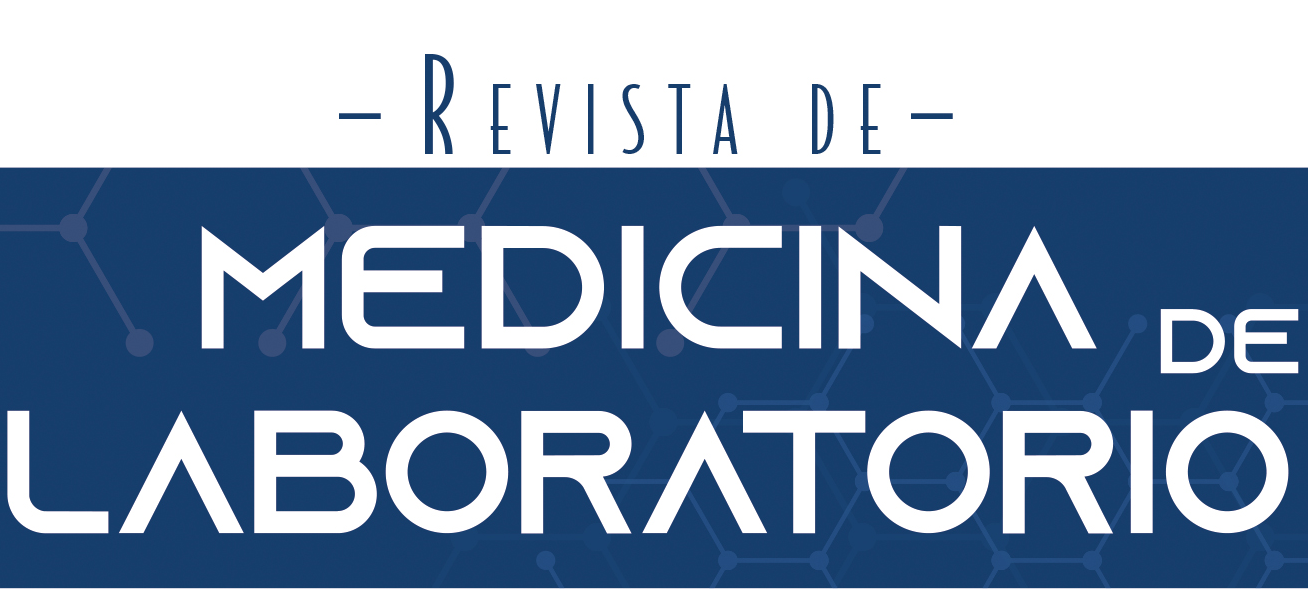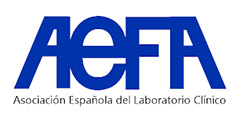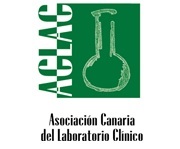Voelkerding K V., Dames SA, Durtschi JD. Next-generation sequencing:from basic research to diagnostics [Internet]. Vol. 55, Clinical Chemistry. Clin Chem; 2009 [cited 2020 Oct 15]. p. 641–58. Available from: https://pubmed.ncbi.nlm.nih.gov/19246620/
DOI: 10.1373/clinchem.2008.112789
Stark Z, Schofield D, Alam K, Wilson W, Mupfeki N, Macciocca I, et al. Prospective comparison of the cost-effectiveness of clinical whole-exome sequencing with that of usual care overwhelmingly supports early use and reimbursement. Genet Med [Internet]. 2017 Aug 26;19(8):867–74. Available from: http://www.nature.com/articles/gim2016221
DOI: 10.1038/gim.2016.221
Tan TY, Dillon OJ, Stark Z, Schofield D, Alam K, Shrestha R, et al. Diagnostic impact and cost-effectiveness of whole-exome sequencing for ambulant children with suspected monogenic conditions. JAMA Pediatr [Internet]. 2017 Sep 1 [cited 2020 Oct 15];171(9):855–62. Available from: https://pubmed.ncbi.nlm.nih.gov/28759686/
DOI: 10.1001/jamapediatrics.2017.1755
Payne K, Gavan SP, Wright SJ, Thompson AJ. Cost-effectiveness analyses of genetic and genomic diagnostic tests. Nat Rev Genet [Internet]. 2018;19(4):235–46. Available from: http://www.ncbi.nlm.nih.gov/pubmed/29353875
DOI: 10.1038/nrg.2017.108
Masseroli M, Galati O, Manzotti M, Gibert K, Pinciroli F. Inherited disorder phenotypes: controlled annotation and statistical analysis for knowledge mining from gene lists. BMC Bioinformatics [Internet]. 2005;6(Suppl 4):S18. Available from: http://bmcbioinformatics.biomedcentral.com/articles/10.1186/1471-2105-6-S4-S18
DOI: 10.1186/1471-2105-6-S4-S18
Bajdik CD, Kuo B, Rusaw S, Jones S, Brooks-Wilson A. CGMIM: automated text-mining of Online Mendelian Inheritance in Man (OMIM) to identify genetically-associated cancers and candidate genes. BMC Bioinformatics [Internet]. 2005 Mar 29;6:78. Available from: http://www.ncbi.nlm.nih.gov/pubmed/15796777
DOI: 10.1186/1471-2105-6-78
van Driel MA, Bruggeman J, Vriend G, Brunner HG, Leunissen JAM. A text-mining analysis of the human phenome. Eur J Hum Genet [Internet]. 2006 May 22;14(5):535–42. Available from: http://www.nature.com/articles/5201585
DOI: 10.1038/sj.ejhg.5201585
Robinson PN, Köhler S, Bauer S, Seelow D, Horn D, Mundlos S. The Human Phenotype Ontology: a tool for annotating and analyzing human hereditary disease. Am J Hum Genet [Internet]. 2008 Nov;83(5):610–5. Available from: http://www.ncbi.nlm.nih.gov/pubmed/18950739
DOI: 10.1016/j.ajhg.2008.09.017
Köhler S, Carmody L, Vasilevsky N, Jacobsen JOB, Danis D, Gourdine JP, et al. Expansion of the Human Phenotype Ontology (HPO) knowledge base and resources. Nucleic Acids Res [Internet]. 2019 Jan 8 [cited 2020 Oct 15];47(D1):D1018–27. Available from: https://pubmed.ncbi.nlm.nih.gov/30476213/
Köhler S. Improved ontology-based similarity calculations using a study-wise annotation model. Database [Internet]. 2018 Jan 1;2018. Available from: https://academic.oup.com/database/article/doi/10.1093/database/bay026/4953405
DOI: 10.1093/database/bay026
Mungall CJ, Washington NL, Nguyen-Xuan J, Condit C, Smedley D, Köhler S, et al. Use of model organism and disease databases to support matchmaking for human disease gene discovery. Hum Mutat [Internet]. 2015 Oct;36(10):979–84. Available from: http://www.ncbi.nlm.nih.gov/pubmed/26269093
DOI: 10.1002/humu.22857
Mungall CJ, McMurry JA, Köhler S, Balhoff JP, Borromeo C, Brush M, et al. The Monarch Initiative: an integrative data and analytic platform connecting phenotypes to genotypes across species. Nucleic Acids Res [Internet]. 2017;45(D1):D712–22. Available from: http://www.ncbi.nlm.nih.gov/pubmed/27899636
DOI: 10.1093/nar/gkw1128
Ramoni RB, Mulvihill JJ, Adams DR, Allard P, Ashley EA, Bernstein JA, et al. The Undiagnosed Diseases Network: Accelerating Discovery about Health and Disease. Am J Hum Genet [Internet]. 2017;100(2):185–92. Available from: http://www.ncbi.nlm.nih.gov/pubmed/28157539
Taruscio D, Groft SC, Cederroth H, Melegh B, Lasko P, Kosaki K, et al. Undiagnosed Diseases Network International (UDNI): White paper for global actions to meet patient needs. Mol Genet Metab [Internet]. 2015 Dec;116(4):223–5. Available from: http://www.ncbi.nlm.nih.gov/pubmed/26596705
DOI: 10.1016/j.ymgme.2015.11.003
Lochmüller H, Torrent I Farnell J, Le Cam Y, Jonker AH, Lau LP, Baynam G, et al. The International Rare Diseases Research Consortium: Policies and Guidelines to maximize impact. Eur J Hum Genet [Internet]. 2017;25(12):1293–302. Available from: http://www.ncbi.nlm.nih.gov/pubmed/29158551
DOI: 10.1038/s41431-017-0008-z
Boycott KM, Rath A, Chong JX, Hartley T, Alkuraya FS, Baynam G, et al. International Cooperation to Enable the Diagnosis of All Rare Genetic Diseases. Am J Hum Genet [Internet]. 2017 May 4;100(5):695–705. Available from: http://www.ncbi.nlm.nih.gov/pubmed/28475856
DOI: 10.1016/j.ajhg.2017.04.003
Richards S, Aziz N, Bale S, Bick D, Das S, Gastier-Foster J, et al. Standards and guidelines for the interpretation of sequence variants: a joint consensus recommendation of the American College of Medical Genetics and Genomics and the Association for Molecular Pathology. Genet Med. 2015 May;17(5):405–24.
DOI: 10.1038/gim.2015.30
Roy S, Coldren C, Karunamurthy A, Kip NS, Klee EW, Lincoln SE, et al. Standards and Guidelines for Validating Next-Generation Sequencing Bioinformatics Pipelines: A Joint Recommendation of the Association for Molecular Pathology and the College of American Pathologists [Internet]. Vol. 20, Journal of Molecular Diagnostics. Elsevier B.V.; 2018 [cited 2020 Oct 15]. p. 4–27. Available from: https://pubmed.ncbi.nlm.nih.gov/29154853/
DOI: 10.1016/j.jmoldx.2017.11.003
Li H. Aligning sequence reads, clone sequences and assembly contigs with BWA-MEM. 2013 Mar 16 [cited 2016 Mar 7];3. Available from: http://arxiv.org/abs/1303.3997
Langmead B, Salzberg SL. Fast gapped-read alignment with Bowtie 2. Nat Methods [Internet]. 2012 Apr 4 [cited 2020 Oct 15];9(4):357–9. Available from: https://www.nature.com/articles/nmeth.1923
DOI: 10.1038/nmeth.1923
Van der Auwera GA, Carneiro MO, Hartl C, Poplin R, del Angel G, Levy-Moonshine A, et al. From fastQ data to high-confidence variant calls: The genome analysis toolkit best practices pipeline. Curr Protoc Bioinforma. 2013;(SUPL.43).
DOI: 10.1002/0471250953.bi1110s43
Lai Z, Markovets A, Ahdesmaki M, Chapman B, Hofmann O, Mcewen R, et al. VarDict: A novel and versatile variant caller for next-generation sequencing in cancer research. Nucleic Acids Res [Internet]. 2016 Jun 20 [cited 2020 Oct 15];44(11):108. Available from: https://cghub.
DOI: 10.1093/nar/gkw227
Wang K, Li M, Hakonarson H. ANNOVAR: functional annotation of genetic variants from high-throughput sequencing data. Nucleic Acids Res [Internet]. 2010 Sep;38(16):e164. Available from: http://www.ncbi.nlm.nih.gov/pubmed/20601685
DOI: 10.1093/nar/gkq603
McLaren W, Gil L, Hunt SE, Riat HS, Ritchie GRS, Thormann A, et al. The Ensembl Variant Effect Predictor. Genome Biol [Internet]. 2016 Dec 6;17(1):122. Available from: http://genomebiology.biomedcentral.com/articles/10.1186/s13059-016-0974-4
DOI: 10.1186/s13059-016-0974-4
Auton A, Abecasis GR, Altshuler DM, Durbin RM, Bentley DR, Chakravarti A, et al. A global reference for human genetic variation. Nature [Internet]. 2015 Sep 30 [cited 2015 Sep 30];526(7571):68–74. Available from: http://dx.doi.org/10.1038/nature15393
DOI: 10.1038/nature15393
Karczewski KJ, Weisburd B, Thomas B, Solomonson M, Ruderfer DM, Kavanagh D, et al. The ExAC browser: displaying reference data information from over 60 000 exomes. Nucleic Acids Res [Internet]. 2017;45(D1):D840–5. Available from: http://www.ncbi.nlm.nih.gov/pubmed/27899611
DOI: 10.1093/nar/gkw971
Karczewski KJ, Francioli LC, Tiao G, Cummings BB, Alföldi J, Wang Q, et al. The mutational constraint spectrum quantified from variation in 141,456 humans. Nature [Internet]. 2020 May 28 [cited 2020 Oct 15];581(7809):434–43. Available from: https://doi.org/10.1038/s41586-020-2308-7
DOI: 10.1038/s41586-020-2308-7
Jezela‐Stanek A, Ciara E, Jurkiewicz D, Kucharczyk M, Jędrzejowska M, Chrzanowska KH, et al. The phenotype‐driven computational analysis yields clinical diagnosis for patients with atypical manifestations of known intellectual disability syndromes. Mol Genet Genomic Med [Internet]. 2020 Sep 26;8(9). Available from: https://onlinelibrary.wiley.com/doi/10.1002/mgg3.1263
DOI: 10.1002/mgg3.1263
Robinson PN, Kohler S, Oellrich A, Wang K, Mungall CJ, Lewis SE, et al. Improved exome prioritization of disease genes through cross-species phenotype comparison. Genome Res [Internet]. 2014 Feb 1;24(2):340–8. Available from: http://genome.cshlp.org/cgi/doi/10.1101/gr.160325.113
DOI: 10.1101/gr.160325.113
Cipriani V, Pontikos N, Arno G, Sergouniotis PI, Lenassi E, Thawong P, et al. An Improved Phenotype-Driven Tool for Rare Mendelian Variant Prioritization: Benchmarking Exomiser on Real Patient Whole-Exome Data. Genes (Basel) [Internet]. 2020 Apr 23;11(4):460. Available from: https://www.mdpi.com/2073-4425/11/4/460
DOI: 10.3390/genes11040460
 Número de descargas:
13377
Número de descargas:
13377
 Número de visitas:
6358
Número de visitas:
6358
 Citas:
0
Citas:
0











